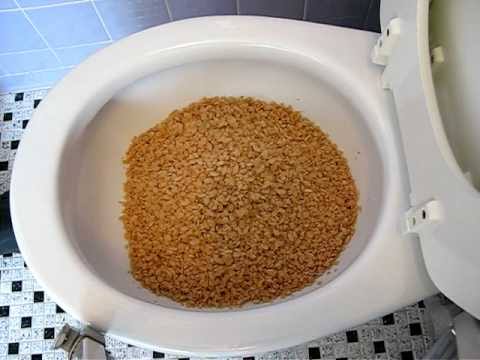We've noticed this post about Flushing Food Down the Toilet? listed below on the web and decided it made perfect sense to talk about it with you over here.

Introduction
Many people are often confronted with the dilemma of what to do with food waste, specifically when it comes to leftovers or scraps. One usual inquiry that develops is whether it's all right to flush food down the commode. In this post, we'll delve into the reasons why individuals might take into consideration purging food, the consequences of doing so, and alternate methods for proper disposal.
Reasons that individuals may take into consideration purging food
Lack of recognition
Some people might not understand the possible injury caused by purging food down the toilet. They may erroneously believe that it's a harmless method.
Comfort
Purging food down the toilet might feel like a fast and simple remedy to disposing of unwanted scraps, particularly when there's no close-by garbage can available.
Idleness
In many cases, individuals might just pick to flush food out of large negligence, without taking into consideration the repercussions of their actions.
Effects of flushing food down the bathroom
Ecological influence
Food waste that winds up in waterways can add to air pollution and harm marine communities. In addition, the water used to flush food can stress water resources.
Pipes concerns
Flushing food can lead to clogged up pipelines and drains, creating costly pipes repair services and troubles.
Kinds of food that need to not be purged
Fibrous foods
Foods with coarse appearances such as celery or corn husks can obtain entangled in pipes and trigger blockages.
Starchy foods
Starchy foods like pasta and rice can take in water and swell, resulting in clogs in pipes.
Oils and fats
Greasy foods like bacon or food preparation oils must never ever be flushed down the commode as they can strengthen and create blockages.
Appropriate disposal approaches for food waste
Making use of a waste disposal unit
For homes furnished with garbage disposals, food scraps can be ground up and purged with the pipes system. However, not all foods appropriate for disposal in this manner.
Recycling
Certain food packaging materials can be recycled, minimizing waste and reducing environmental impact.
Composting
Composting is a green means to throw away food waste. Organic products can be composted and used to enrich dirt for gardening.
The importance of proper waste monitoring
Minimizing ecological injury
Proper waste monitoring practices, such as composting and recycling, aid lessen pollution and protect natural resources for future generations.
Protecting plumbing systems
By avoiding the technique of flushing food down the commode, property owners can protect against costly plumbing repair work and preserve the integrity of their pipes systems.
Final thought
Finally, while it may be tempting to flush food down the toilet for comfort, it is very important to comprehend the prospective consequences of this action. By adopting appropriate waste administration methods and getting rid of food waste properly, people can add to much healthier pipes systems and a cleaner atmosphere for all.
FLUSH FOOD DOWN THE TOILET?
FLUSHING FOOD CAN CAUSE BLOCKED DRAINS IN YOUR HOME
All of the plumbing fixtures in your home are connected to the same sewer pipe outside of your home. This outdoor sewer pipe is responsible for transporting all the wastewater from your home to the Council sewer mains. Even small pieces of food that go down the kitchen sink can cause problems for your sewer. It should therefore be obvious that flushing larger bits of food, such as meat, risks a clog in either the toilet itself or the sewer pipes. Flushing greasy food is even more problematic because oil coagulates when it cools, coating the interior lining of your pipes.
THE TOILET IS NOT A BIN
Food isn’t the only thing that people shouldn’t be flushing down the toilet. People use the toilet to dispose of all kinds of things such as tampons, makeup wipes, dental floss, kitty litter and even underwear. Water goes to great lengths to educate residents about the high costs and stress placed on wastewater treatment systems simply from people flushing the wrong stuff down the toilet. It costs taxpayers millions of dollars each year, and homeowners thousands in blocked drain repairs.
FLUSHING FOOD IS A WASTE OF WATER
Flushing food is a waste of our most precious resource - water. In June this year Level 1 water restrictions were introduced to protect water supply from drought conditions. Much of New South Wales continues to be affected by prolonged drought with recent figures revealing up to 97 per cent of the state remains in drought. Depending on whether you have a single or dual flush toilet, every single flush uses between five and 11 litres of water. In the current climate this is a huge amount of water to be wasting on flushing food that should be placed in the bin (or better yet, the compost).
https://www.jabplumbingsolutions.com.au/blog/can-you-flush-food-down-the-toilet

Do you like reading up on Flushing Food Down the Toilet?? Write a comment further down. We'd be delighted to see your suggestions about this write up. Hoping that you visit us again before long. Enjoyed our article? Please quickly share it. Help somebody else locate it. We take joy in your readership.
Get Offer